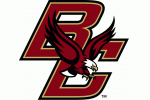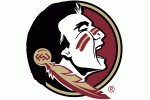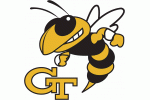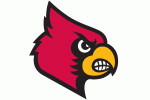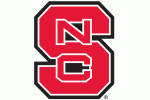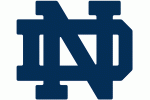With sixteen games in the books and fifteen to go in the regular season let's take a look at how the individual players have fared so far starting with the forwards.
Stats
| Gms | MPG | PPG | FG% | FT% | APG | RPG | BPG | SPG |
ORtg |
| 16 | 30.1 | 14.4 | 46.8% | 54.6% | 1.6 | 6.6 | 1.0 | 1.8 | 102.7 |
Analysis
There is probably no player on this team that generates more questions than James Michael McAdoo. He came out of high school as a top ten recruit and was even talked about as a possible top ten NBA Draft pick even after his freshmen season. Adding fuel to the expectation fire was a string of solid play during the 2012 postseason when John Henson was nursing a wrist injury. The conventional thinking was McAdoo would have a spectacular, All-American type season in 2013 which could soften the blow of losing four first round draft picks. It didn't quite work out that way and McAdoo returned for his junior season.
Because McAdoo dealt with a back injury and was forced to play out of position at the five in 2013, there was a burgeoning hope that a return to the four and UNC in a traditional lineup would help McAdoo be more productive. In addition, P.J. Hairston as perimeter scoring threat would open up the spacing and permit McAdoo to operate as a second option to a potential ACC Player of the Year. Unfortunately Hairston never played a game with UNC and the current team is operating with a imbalanced offense.
For his part, McAdoo has actually put together a decent season through sixteen games. There are still elements of his game that are problematic. The free throw shooting is one. McAdoo is presently at 54% from the line which is a liability considering he is 66th in the country and 4th in the ACC in free throw rate. His quickness at the four gives him plenty of chances to get to the rim whether he can either score or get fouled. The issue is he has trouble finishing at the rim and if he does get fouled, chances are he is only making one free throw out of two.
Still, McAdoo is productive and his numbers are slightly better than they were last season. The scoring is the same at 14.4 ppg but shooting(46.8% vs 44.5%), blocks(1.0 bpg vs 0.4), assists(1.6 apg vs 1.1) and steals(1.8 spg vs 1.5) are all slightly improved. The rebounding has dipped from 7.3 rpg to 6.6 this season however playing more minutes with a traditional five could be a factor there.
The verdict on McAdoo is he has certainly contributed but it could be more which is sort of the theme of his three years at UNC. It is a whole bunch of "ifs" with his game where you look at his numbers or the kinds of shots he misses and realize if he could simply convert more of those point blank shots or get the free throw shooting to a reasonable level, he would be in the midst of a spectacular season. Over the last half, if there was a way McAdoo could turn the tide on some of this areas of weakness, it would certainly help to push this team in the right direction.
Stats
| Gms | MPG | PPG | FG% | 3P% | FT% | APG | RPG | SPG | ORtg |
| 16 | 27.9 | 9.6 | 46.3% | 31.3% | 45.5% | 2.6 | 5.8 | 1.4 | 97.0 |
Analysis
J.P. Tokoto is yet another player impacted by the loss of P.J. Hairston though not in the way you might think. While McAdoo is impacted because he positioned to face a tougher opposing defense, Tokoto is being asked to exceed the role he would otherwise fit perfectly into if Hairston were on the floor. Looking at Tokoto's numbers, his production would be a nice fit if Hairston was operating on the other wing. If Hairston were playing the wing guard, Tokoto would be free to focus primarily on defense, rebounding, being a facilitator and picking his moments where he could maximize his offensive effectiveness. After all, Tokoto was brought in as a role player very much in the mold of that one player who may not be offensive minded and usually elicits complaints from the fan base because he starts over a designated shooter.
As it stands, Tokoto is required to expand his role and be more of a scoring threat. The issue there is his shot is nowhere near the level of consistency it needs to be to properly fill that role. Tokoto is shooting 31% from three and is also a 45% free throw shooter. In an ideal world, Tokoto would provide offense as a fourth or fifth options. With Marcus Paige and McAdoo being the best offensive options and Nate Britt and Joel James not being ones, Tokoto is forced to be a shooter more often than necessary.
Which is not a knock on Tokoto. There is a lot to love about his game providing he is on a team where his role is to fill in certain gaps not be a perimeter scoring. That means Tokoto's best path to being a productive contributor is picking his moments. He also needs to get his points by utilizing his athleticism whether that be on putbacks, running the floor in transition or driving to the rim. Shooting jumpers is fine but he shouldn't settle for that considering his shot simply isn't reliable.
Tokoto is an illustration of a general problem with this team and that is the roles are somewhat in flux at times. Players don't necessarily stick to their strengths which stems from impatience or a lack of development as a unit. If Tokoto and others focus more on what they do well, so much the better moving forward.
Stats
| Gms | MPG | PPG | FG% | 3P% | FT% | RPG | ORtg |
| 16 | 8.8 | 1.8 | 40.9% | 33.3% | 60.0% | 1.8 | 92.9 |
Analysis
The most surprising stat for Isaiah Hicks is he is only averaging 8.8 mpg. That is rather limited playing time for a player that came in as highly regarded. The problem is Hicks is essentially buried on the bench behind James Michael McAdoo and Brice Johnson who sometimes slides over to the four. Hicks has played some at the three because there is playing time on the wings thanks to the lack of depth there. For the most part Hicks doesn't see the court enough to make an impact of the game.
The question is why, besides the dearth of big men UNC has? Hicks has shown himself to be a little tentative. That is not wholly unexpected nor is it necessarily a bad thing. Hicks is especially focused on making sure he plays within the confines of his own game and the team itself. It is a great attitude for a player to have since his attention is on playing in a way that helps the team versus forcing a shot or even being selfish.
The downside to that is great play sometimes requires taking some chances and being aggressive. Hicks doesn't do anything to stand out and is also saddled with a constant shift in his role when he's on the court. He clearly isn't as comfortable at the three and at the four he still needs to develop the physical strength to really be a factor on the block.
It is probably not fair to call this a "lost season" for Hicks but chances are it will not change much from what it has already been barring a sudden uptick in his playing time.
Stats
| Gms | MPG | PPG | FG% | FT% | RPG | ORTG |
| 16 | 7.7 | 1.6 | 56.3% | 43.8% | 1.6 | 108.0 |
Analysis
Jackson Simmons really hit the radar last season in UNC's win at Florida State where he scored eight points and was a effective on the defensive end. This season there have been a couple of games like that. Simmons drew a charge in the win over Louisville at a critical moment when UNC got into foul trouble. He also hit a couple of baskets to help maintain a double digit lead. He also grabbed five rebounds in the loss to Texas but beyond that has been fairly quiet from a statistical standpoint.
Of course it could be argued Simmons doesn't play for his stat line, he plays for sticking to fundamentals especially when it comes to rebounding and executing on the defensive end. More often than not, Simmons finds himself sitting at the scorer's table because Brice Johnson or Kennedy Meeks or whoever didn't box out or rotate on the defensive end. Simmons going into the game is a message to whichever player didn't do something right that they need to focus on the details better.
Simmons is still capable of contributing and generally does a great job of playing within himself opening the door to make that one play here or there. The issue is his size leaves him a bit overmatched, especially going against more athletic players leaving Simmons to contribute where he can. In that respect he has value but on the flip side, the less Simmons plays the better not because he is a liability but because it means other players are doing their jobs.


